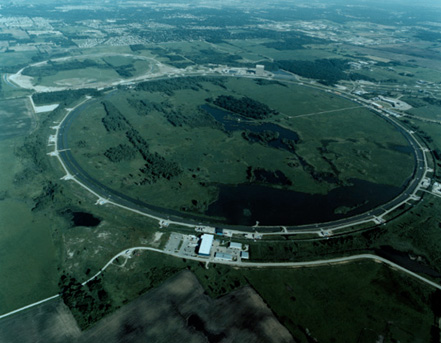 |
Run II Discovery |

|
The Discovery of the Top Quark
CDF and DZero 1995
What is Fermilab? - Run II Newscasts - Analyze the Data - Particle Physics Bibliography
News Flash 1995: The Top Quark is Discovered at Fermilab
The discovery of the top quark fills an imporant hole in the Standard Model. The discovery of the bottom quark in 1977 had introduced a third generation of quarks. Each generation has two quarks. The first generation has the very common up and down quarks which are found in all atomic nuclei. The second generation have charm and strange quarks, which are rarer but are still found abundantly enough in some types of mesons. The third generation had only the bottom (sometimes also called "beauty" or just "the b-quark"). This left a hole in the third generation, which has now been filled.
Even with the energies available in the Tevatron and with the most sophisticated detectors, the top was hard to find. Tops and bottoms had previously only existed in the early universe. They all decayed long ago into other particles. They decay so quickly (physicists say they have short lifetimes) that, even after a top is made from a proton-antiproton collision, a rare event itself, it exists for such a short time that it cannot be directly observed. Rather, the products of top decay are identified and traced back to the top after extensive computer analysis. At Fermilab, when you need to look for a needle in a haystack, you use fast computers with lots of memory.

The Fermilab Tevatron
"The Discovery of the Top Quark" from Scientific American
-
Calculate the Mass of the Top Quark